This post may contain affiliate links. Read more at our disclosure policy.
If you want to know how to cook chicken on a gas grill without burning it, our simple tips will help you perfect your chicken game and make you a backyard hero. The secret lies in making sure you use a two-zone cooking method, with a direct heat side and an indirect (or cooler) side of the gas grill. Let us show you how to create these zones on your gas grill!
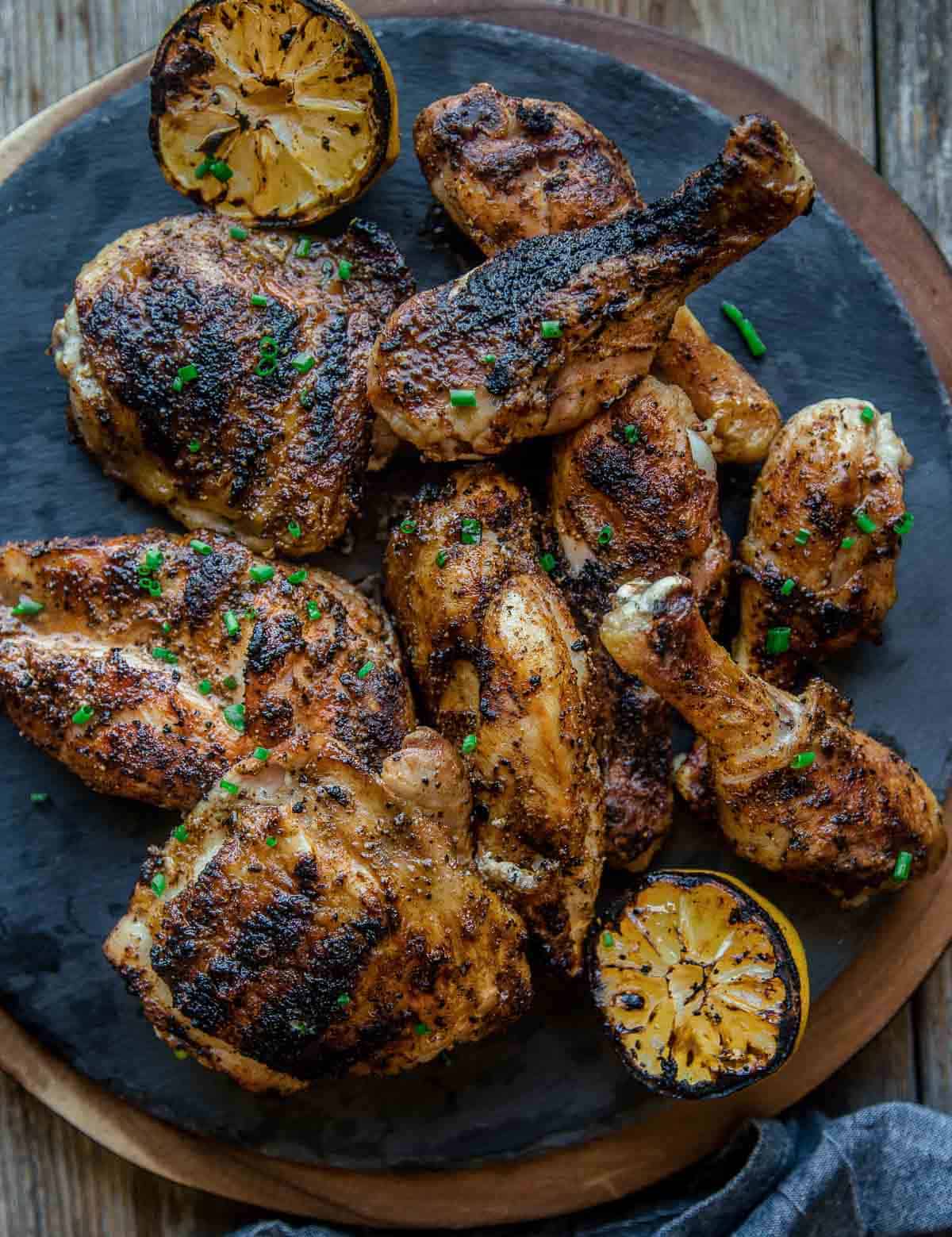
The two most common mistakes people make when grilling chicken on a gas grill are 1) Cooking chicken at too high of heat and, 2) Cooking a pre-sauced chicken. Both cause the chicken to burn on the outside before it’s done cooking on the inside. When it comes to perfect grilled chicken on a gas grill, it’s not much different than using a charcoal grill if you follow these simple steps.
By doing so, you can achieve the perfect grilled chicken every time!
Table of Contents
The Issue
If you try to grill chicken using just a single burner (adjusting it up and then down, then up then down), you will never achieve the proper sear or crust that adds flavor and texture.
If you crank the heat on your burner to high and grill the chicken over direct heat for the entire time, more often than not you will burn the outer edges of the chicken without cooking the inner portion all the way through.
To balance the need for a good sear and to cook chicken through to its safe recommended temperature, it’s best to set up your gas grill for two-zone grilling. This way you sear the chicken first (for the optimal sear and crust), and then move the chicken to the cooler side to finish cooking internally.
This method works for every cut and type of chicken, from boneless skinless chicken breasts to bone-in chicken thighs. The secret to juicy chicken breasts or any other part of the bird is to follow this process and not overcook the chicken. Sound easy enough? Let’s go.
Ingredients
- Chicken – You can use skin-on or skinless chicken for this. This method works for both. We are using chicken breasts. If using skin-on thighs or legs the only difference is the amount of time and internal temperature you cook the chicken to. The cooking time will be a little longer for bone-in chicken.
- Binder – We use extra virgin olive oil to allow the seasoning to stick.
- Seasoning – For chicken, we recommend a seasoning, or dry rub, without sugar, which can caramelize and burn quickly over direct heat. Our chicken seasoning is a mix of herbs and spices perfect for any chicken cut. If you are making your own chicken rub be sure the salt you use is kosher salt.
- BBQ Sauce – One of the best ways to add flavor to grilled chicken on a gas grill is to glaze at the very end with barbecue sauce. We love our Red Wine Barbecue Sauce, but you can use your favorite store-bought sauce.
Expert Tip
To save money, buy a whole roaster chicken and then break it down, or quarter the chicken, into smaller pieces. You can use the carcass for chicken stock.
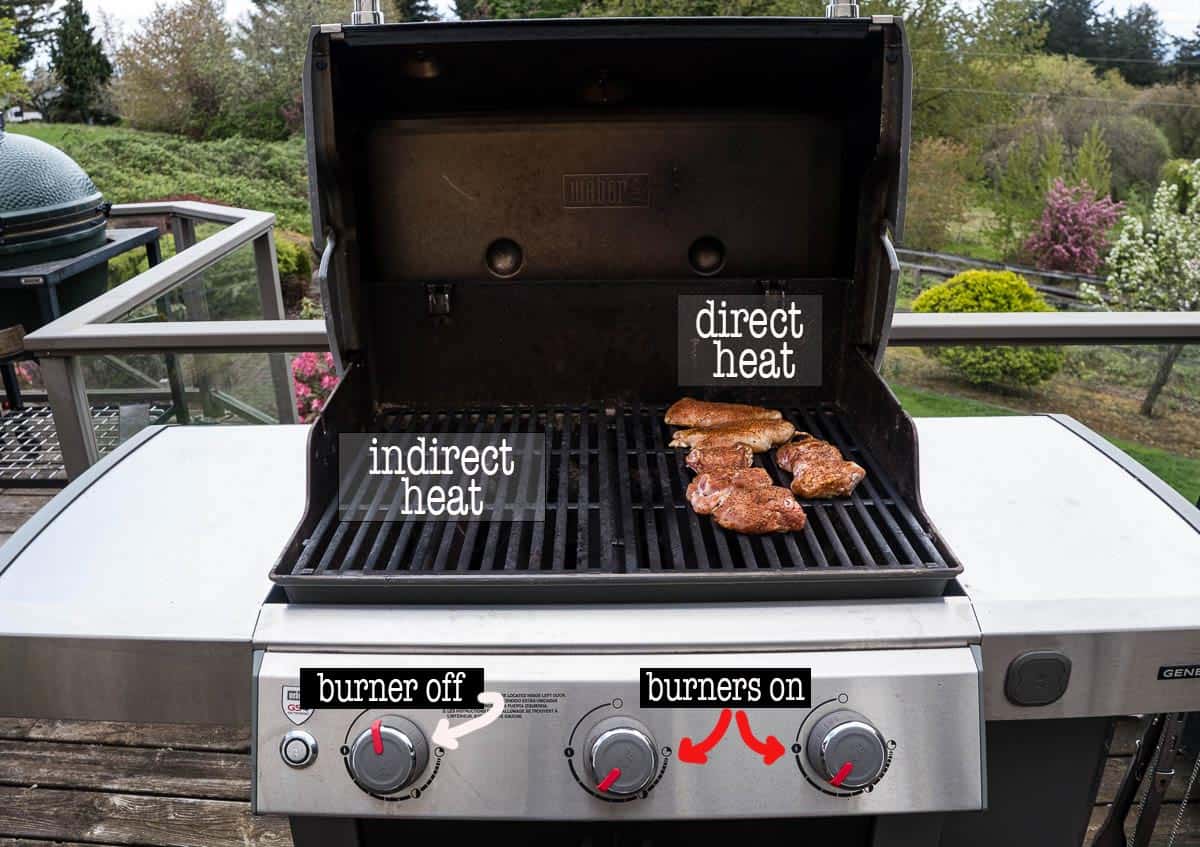
Step 1: Preparation
Set up your grill for two-zone grilling, or indirect grilling. If using a 3-burner gas grill like the example above, then light two adjacent burners and leave one off completely. The internal grill temperature will read 500 degrees and your dials should be set to medium-high heat.
Over the direct heat, the temperature will run closer to 600 degrees Fahrenheit (F). Over the cooler side of the grill, the temperature will be closer to 375 – 400 degrees F. That lower temperature allows you to finish cooking the inside of the chicken without burning it after you get a good sear.
Step 2: Season Chicken
Be sure the chicken is dry. We pat it dry on both sides with paper towels. Coat chicken with a light amount of olive oil and then apply your chicken seasoning.
Step 3: Grill Direct
Place the chicken over the hot side of the grill, or directly over the lit burners on the grill grates. If the chicken has skin start skin side down so you can monitor the caramelization on the chicken skin.
Do not worry about grill marks right now, instead focus on the texture of the chicken. Grill the chicken for up to six minutes or until you see a crust form. Then flip the chicken and continue grilling the other side for an additional 4 – 6 minutes over direct heat to get a crust on that side.
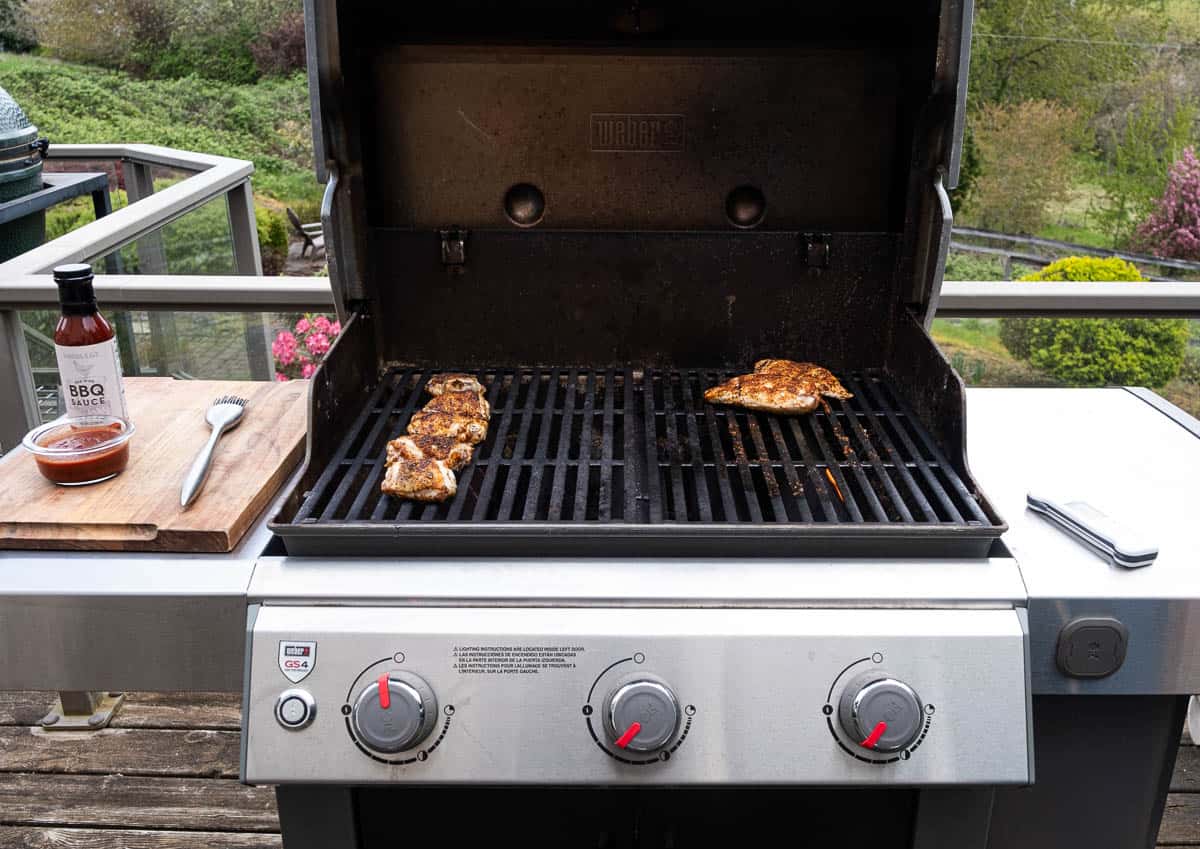
Would you like to save this?
Step 4: Grill Indirect – Glaze
Once you have the crust you like on the chicken it is not likely cooked to the proper internal temperature and needs to be moved away from the direct heat to finish cooking (and avoid burning the outside). So place the chicken over the indirect side of the grill to finish cooking for an additional 5 – 10 minutes.
If you leave the chicken over direct heat you will run the risk of burning the outside, especially with skin-on chicken breasts. So the best way to finish the chicken is over the indirect heat zone.
If using BBQ Sauce: Once the internal temperature of the chicken reaches around 150 degrees for chicken breast (and 160 degrees for chicken thighs, legs, and wings) you can add your BBQ sauce using a grill brush.
Glazing your chicken with BBQ sauce over indirect heat closer to the end of the cooking process is also a key grilling tip to prevent the sugars in the sauce from burning over direct heat.
Step 5: Rest
Once the internal temperature of the chicken reaches 158 – 160 degrees Fahrenheit for breasts (170 degrees for legs and thighs) in the thickest part of the chicken – remove and let rest. Carry over cooking will occur while it rests and the internal temperature will rise up to an additional 5 degrees to the safe and recommended finishing temperature. Slice and serve. If glazing, you can glaze a second time as soon as you start the rest and it will tack up as the chicken rests.
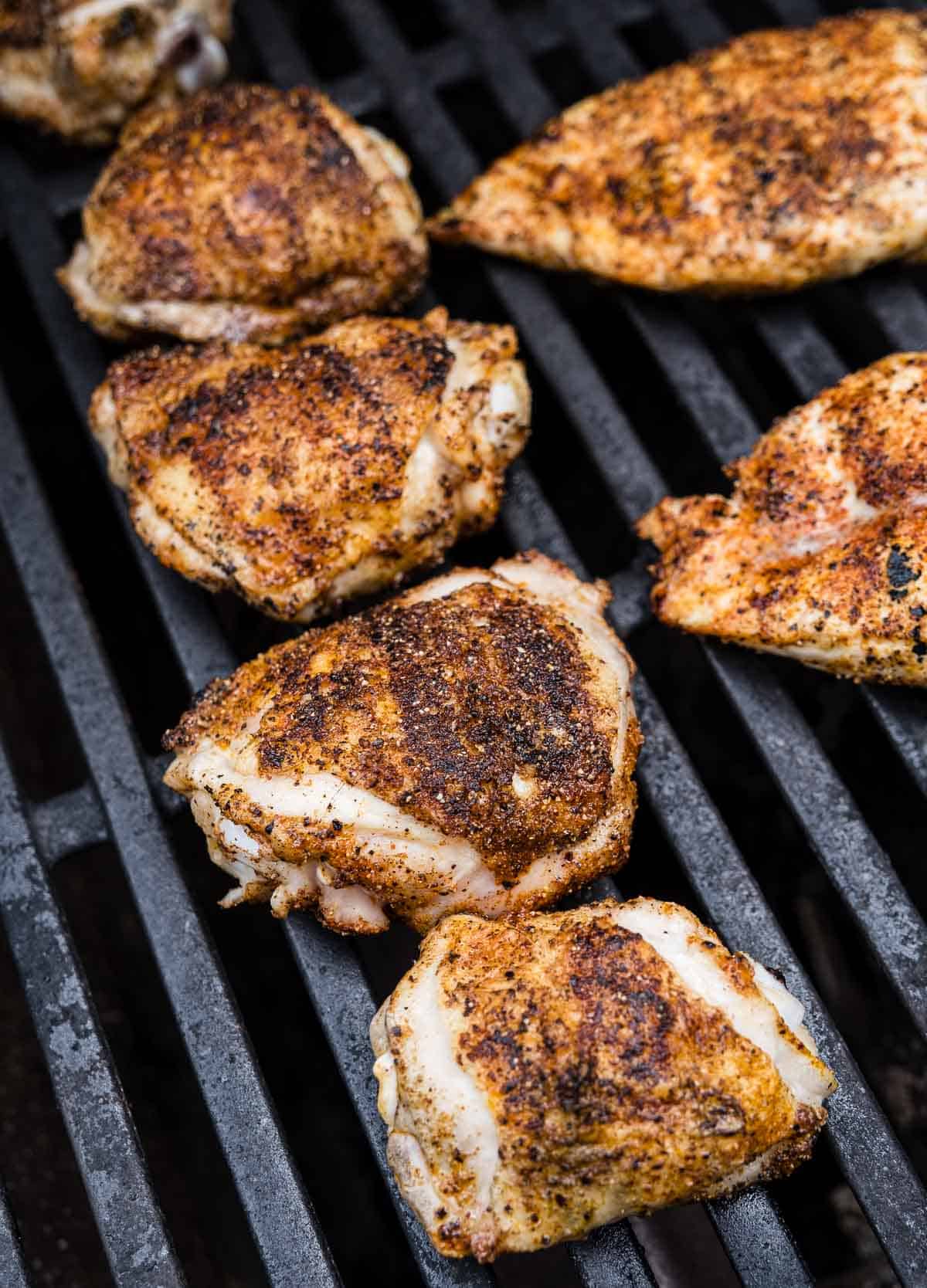
Grilling Tips
The key to cooking any chicken cut is getting chicken to the proper internal temperature. This is what gets you juicy chicken. You also need to consider carry-over cooking and pasteurization.
For chicken breasts, we recommend cooking chicken to 155 – 157 degrees Fahrenheit. For thighs, legs, and wings we recommend 170 degrees Fahrenheit to allow the dark juicy meat to shine.
The cooking time will vary based on your cuts of chicken. Use a good quality instant-read thermometer to monitor the internal temperature.
Frequently Asked Questions (FAQ)
Chicken is a great meat to marinade. It’s also very dense, so chicken marinades tend not to infuse as much as other meats. If marinating chicken, try to allow it to occur overnight and be sure to season the meat after you remove it from the marinade.
On a gas grill use medium-high heat or a target temp in the grill of 500 degrees Fahrenheit with a two-zone grilling set up. This way you can sear and form the crust on the chicken and finish over indirect heat. If the heat is too low you won’t get the nice sear and crust form.
What To Make With This Dish
Browse any of our side recipes. With chicken we default to Roasted Potatoes or a No-Mayo Coleslaw. Grilled Broccolini is an easy and delicious complement to make because you can grill direct while chicken is cooking indirect.
Other Grilled Chicken Recipe Ideas
Tools Used
- Digital Meat Thermometer – A good instant read meat thermometer is important for any outdoor cooking. We recommend the Thermoworks Thermapen One as our favorite.
- Long Tongs – A good set of tongs will prevent your hand from burning over heat. Trust us, save those arm hairs.
About Vindulge
Mary (a certified sommelier and recipe developer) and Sean (backyard pitmaster) are co-authors of the critically acclaimed cookbook, Fire + Wine, and have been creating content for the IACP nominated website Vindulge since 2009. They live in Oregon on a farm just outside Portland.
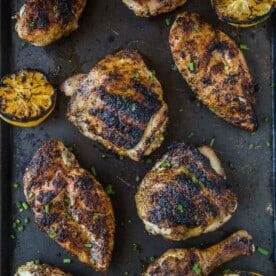
How To Cook Chicken On A Gas Grill Without Burning
Equipment
Ingredients
- 2 pounds chicken breast, (You can also substitute with thighs or legs.)
- 2 tablesoons extra virgin olive oil, (You can use any oil you have access too. We use EVOO.)
- ¼ cup chicken seasoning
- 1 cup Red Wine BBQ Sauce, (You can use any BBQ sauce you enjoy if you choose to glaze.)
Instructions
- Preparation: Set up your grill for two-zone grilling, or indirect grilling. The internal grill temperature will read 500 degrees and your dials should be set to medium-high heat. Over the direct heat, the temperature will run closer to 600 degrees Fahrenheit (F). Over the cooler side of the grill, the temperature will be closer to 375 – 400 degrees F. That lower temperature allows you to finish cooking the inside of the chicken without burning it after you get a good sear.
- Season: Be sure the chicken is dry. We pat it dry on both sides with paper towels. Coat chicken with a light amount of olive oil and apply the chicken seasoning.
- Grill Direct: Place the chicken over the hot side of the grill, or directly over the lit burners on the grill grates. If the chicken has skin start skin side down so you can monitor the caramelization on the chicken skin. Do not worry about grill marks, focus on the texture of the chicken. Grill the chicken for up to six minutes or until you see a crust form. Then flip the chicken and continue grilling the other side for an additional 4 – 6 minutes over direct heat to get a crust on that side.
- Grill Indirect: Once you have the crust you like on the chicken it is not likely cooked to the proper internal temperature and needs to be moved away from the direct heat to finish cooking (and avoid burning the outside). So place the chicken over the indirect side of the grill to finish cooking for an additional 5 – 10 minutes.
- Optional Glaze: Once the internal temperature of the chicken reaches around 150 degrees for chicken breast (and 160 degrees for chicken thighs, legs, and wings) you can add your BBQ sauce using a grill brush while it's over indirect heat and continue cooking the chicken.
- Rest: Once the internal temperature of the chicken reaches 158 – 160 degrees Fahrenheit for breasts (170 degrees for legs and thighs) in the thickest part of the chicken – remove and let rest. Carry over cooking will occur while it rests and the internal temperature will rise up to an additional 5 degrees. Slice and serve. If glazing, you can glaze a second time as soon as you start the rest and it will tack up as the chicken rests.
Notes
Nutrition
Nutrition information is automatically calculated, so should only be used as an approximation.
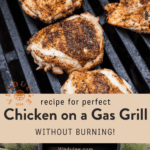
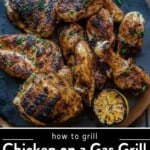
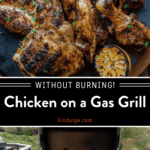

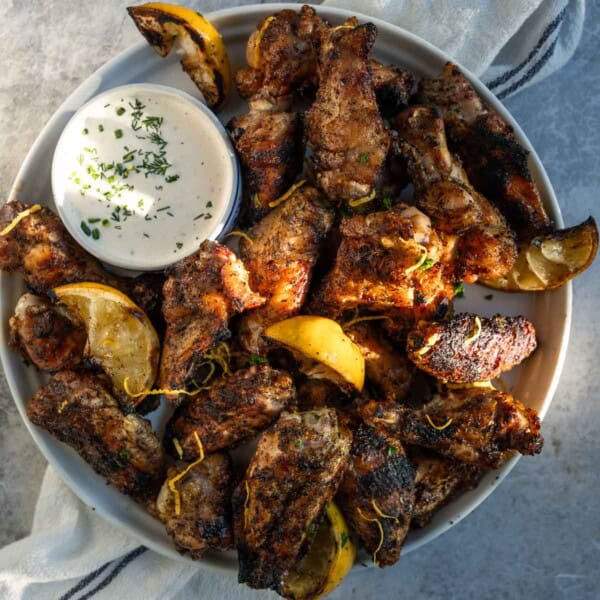
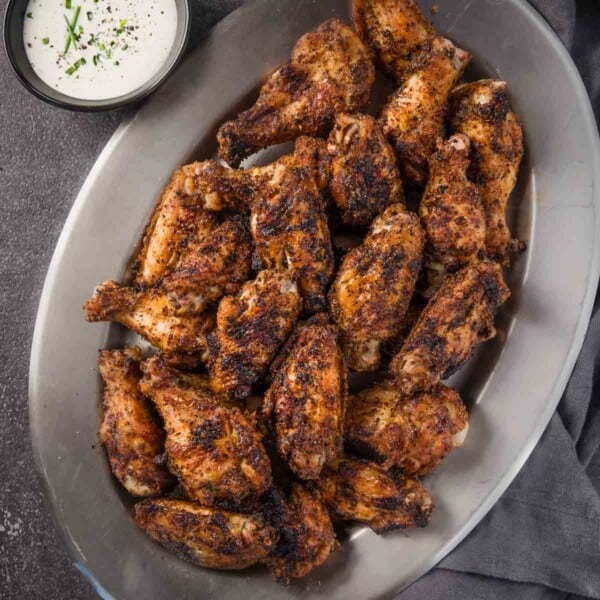
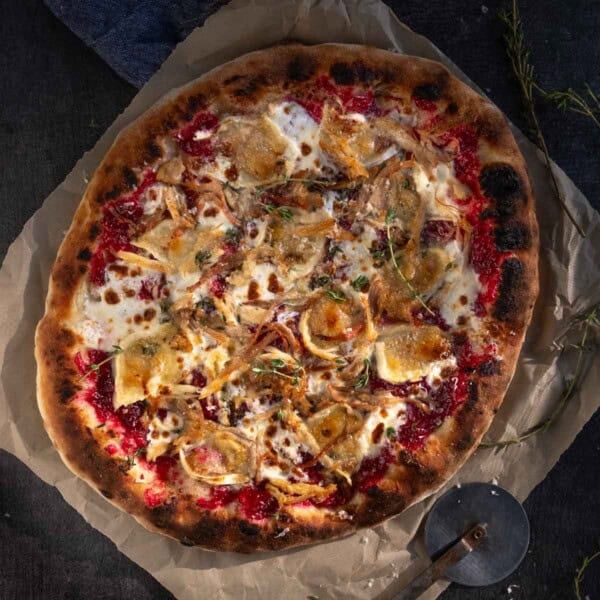
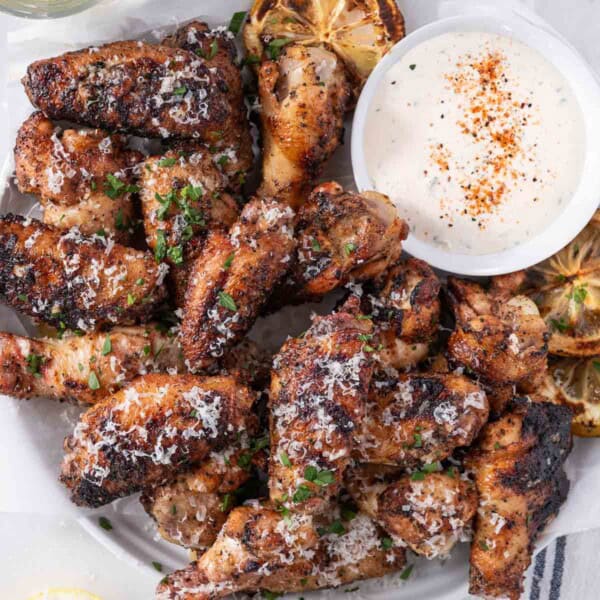
















Don’t overcook chicken again – this is a foolproof way to make chicken on a gas grill for the best flavor. The key is the high heat.